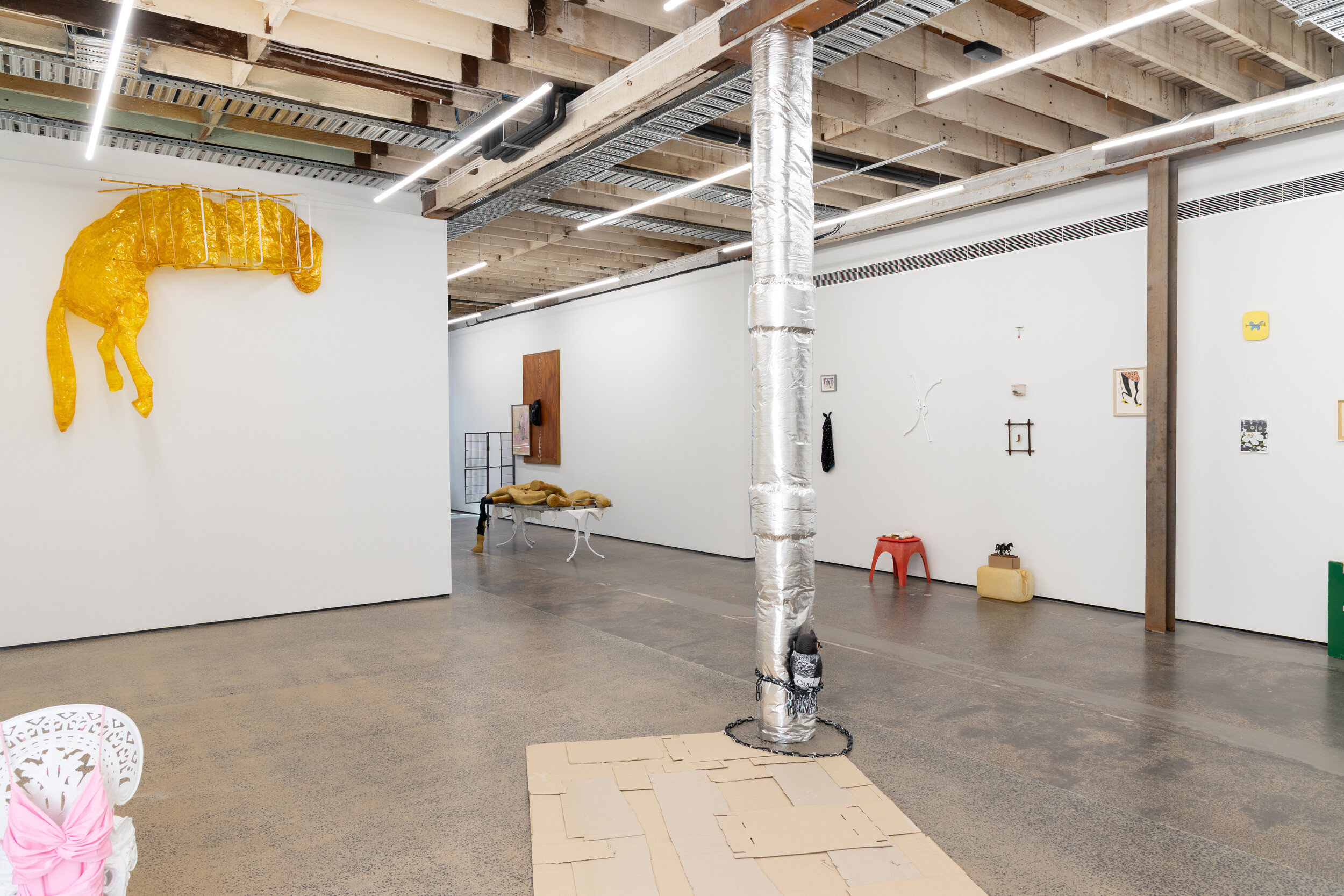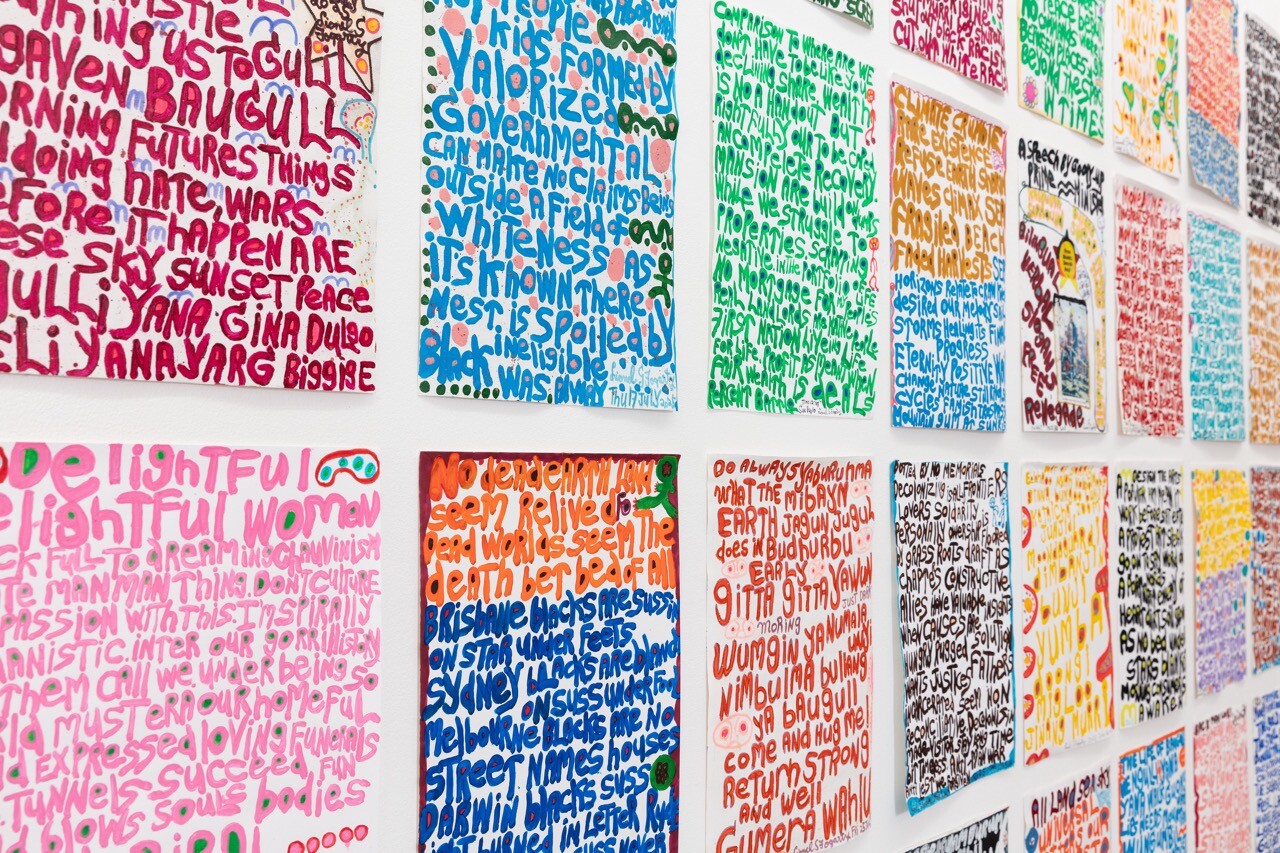Elizabeth Newman
Cameron Hurst and Babs Rapeport
Tzzzzzz. Ooooooo. Pshhhh. That’s the sound of a cryogenic freezer opening for the first time in just under a decade. The year is 2001. The day is September 11. A rupture. The location: Fitzroy North. Elsewhere, deep within polite Brisbane society, the final curtain is called for a hiatus-confounding doppelganger who has masqueraded as the darling of Australian minimalism-constructionism-Imi Knoeblism-proto-Neon Parcism-frame-within-a-frameism, Elizabeth Newman. Far from the cosmopolitan Melbourne art historians, this imposter produced a series of art objects and events in Newman’s name during her well documented break from practice. Fzzzzzzz. The Real Elizabeth Newman re-enters the art world. Precisely twenty-years later, freshly deposited by the Freo Doctor, two wide-eyed art-adjacents sat down at their respective desks to discuss Newman’s new show at Neon Parc. Did Bush do Elizabeth Newman too?
05/09/21
Hey Cam,
As you know, I’m writing this review in the lead up to the Jewish New Year/Birthday of the World, Rosh Hashana. When we first felt the impulse to respond to Elizabeth Newman’s Neon Parc show a few weeks ago, I was pretty direct with you. Ellul, the month leading up to the Jewish High Holidays, is a period of intense ritual self-reflection, a time in which to be singularly kind, considered and godly. In this spirit of imitatio Dei along with our general shared interest in Newman’s oeuvre, I’d like to make this happen without unnecessarily upsetting anyone.
Newman’s exhibition is made up of twenty-four paintings and one sculpture. Perhaps it would be good for us to consider a few of the works in detail: to describe every corner on every red square, to notice each negative space? I’m taken by the wood, stone and metal sculpture titled One (2021). Can we spend a minute thinking about colour, too? We could look at a 2021 Untitled oil and collage on linen work, which typifies a style of abstraction that appears in the show a few times. This one is mostly white, with a vertical rectangle of what looks like paper applique in a dense steely blue. It also has a series of shoddy circles and squares in grey, umber and primary red and yellow.

These works are really good for not talking shit or thinking unkindly about the world. At this point, it almost seems like a shame to shove a bunch of words on them. You don’t have to read too hard between the painted lines—or, explicitly, in Discipline’s publication of Newman’s writing, Texts (2019)—to know that she is sick of the chatter too. The works are responses to too much talk. Presumably she paints and puts together most of the work alone. They are products of a reprieve. In exchange for exhibition and audience, Newman and the works ask for silence.
It would be fine to talk about the art-historical side of this exhibition, but I don’t really know what the point is. Firstly, about a million people have already written about Newman’s work through that lens. Ah yes, Modernism. Post-modernism. The VCA before it sucked! Romantic art. The Russians, the Americans, each with their hard lines and then soft lines, and with primary colours and adjacent ideologies.
Every review of Newman’s art says the same thing: as in the title of her monograph More than what there is (2013), these works are inexhaustible. Newman uses repetition in loose and exact ways. There is no finite claim to meaning or instructive intention. The gallery space is used to assemble the best expressions of her intuition in a refined order. She is tied to the history of Modernism, a canon, and only gives us what has been sanctioned as officially “good” in that bent. Mmmm, red square, blue square, soft lines, hard lines. Ok, now what?
Since recently becoming “art-pilled”, I have played host to a little creature who lives in my mind’s eye. The species looks generally like a mix between a pair of dentures, a smooth Koala brain, a curled fist and one of Luke Sands’ Mouthals (2015). Through my own glazed-over eyes, I can often perceive the workings of a similar character in the gaze of people around me, who seem to permanently sublet high-value real estate in their own minds to these creatures without much trouble. Content with my spot on the sidelines, I have come to know the way these tiny monsters nest: in front of a formalist artwork, they ruminate on the spot and proclaim “mmmm,” “mmmm,” Futurama-style. For years my ignorance has been bliss, but now I’m on that art trip I feel a more acute desire for this kind of intimacy.
Now, looking at Newman’s work, there is some vague whirring sensation sitting somewhere in the back of my brain. Mmmm, red square, blue square, soft lines, hard lines. Could this be it? Maybe this New Year marks a growth in my own capacity to engage with work like Newman’s on a formal/sensual/emotional level. No, my jaw is still clenched from a long day of “work”. It might take more than mindfulness and exposure therapy for this one. Maybe bi-weekly sessions with a talented psychoanalyst at $200 a pop for several years would do the trick. Mmmm.
Anyway, I hope you won’t take my approach so far as any kind of denigration against the deep, unending magic of colour and space. We both know that blue is the warmest colour anyway.
Talk soon,
Babs

06/09/21
Dear Babs,
Look. We’re here now. Shoving a bunch of words at art is unfortunately my life’s calling/praxis, so I obviously think there’s a point to writing about the show. Admittedly, the purview of this review has ping-ponged around in unanticipated ways. But art always shifts when you look at it closely, read about it and think about it through writing: c’est la vie, baby. I’m happy to accept the role of the pernicious art historical overthinker. You’re an artist whose sensibilities I adore and the only person I know who would drive to the Niddrie Library to get a busted copy of the Best Australian Essays 2002 just because Newman mentioned one in passing in her monograph. Writing about the Neon Parc exhibition together seems generative. But it’s telling how the initial collaborative fervour always gets somewhat squished in the doing by external forces and by the inarticulate frustration that develops from inevitable clashes in response.
Maybe this has something to do with “confronting the subjectivity of an Other”, to roll with some milquetoast psychoanalysis in the spirit of the week. We spoke about the documented narratives that frame Newman’s oeuvre via the conceptual artist and writer Ian Burn’s instructive essay ‘Is art history any use to artists?’ (1985), which we discovered in Victoria Perin’s Memo review of Π.O.’s Heide. Burn writes that artists exchange anecdotes as a form of making art history that matters. Researching for this, multiple people told me the same anecdote about Newman’s business card. Apparently (I haven’t seen it), it has two near identical sides—-both say her name and her email address, which has the handle “dividedsubject”—-but one side says “Artist” and the other says “Analyst”. Cool. To do a Burnian reading, this recurring story shows that some part of Newman’s appeal to the Melbourne art milieu is her Janus-like immersion in the art world and the world of Lacanian analysis. Psychoanalysis obviously isn’t actually incomprehensible or impossible. But I think for many people (well, me anyway) encountering someone who ostensibly does understand Écrits has a certain… frisson. Newman is one of those people.

You’ve got Judaism (Shana Tova, by the way); Newman’s got art and analysis as her two key, albeit distinct, frameworks of existential meaning. This is the mythology I’m projecting onto her, anyway. Perhaps it’s my goyish secular impoverishment, but I’m drawn to her work as a sustained commitment to seeking meaning under arid late capitalism via these two parallel arenas. In Texts, she writes,
Fatigue vanishes as soon as I become excited about something or someone: that is, when I am symbolically oriented towards some Thing or some One. Then I am desirous, desiring and vehemently alive! … fundamentally, (this desire is) a social bond, a link between two or more subjects, via discourse.
This is a great quote. It is optimistic and collective. “Vehemently alive!” On top of the enthusiastic Lacanian capitalisations, it has a perfectly Romantic sincerity. Oh, the transcendence of the artistic encounter! The glorious humanist possibilities of connection with others across time and space! I’d be lying if I said I didn’t get off on it.
Vehemence notwithstanding, see if you can drum up some kind of aliveness for this review/ discursive link between subjects. I’ve got some desirous thoughts about the “LAS PINTURAS NEGRAS” painting.
What are you thinking?
Cam
07/09/21
Morning Cam,
I took the liberty of scanning that Burn essay to our Google Drive and giving it a read for the first time in a year. G-d it’s so fucking good. Thus far in our lives, it has been energising to trace the value of located histories: the way that narratives are built over time in the same place. Burn affirms this precept as a practice in Australian art history and gives me some extra guts to seek out this knowledge, in gossip-mongering or otherwise.
Newman’s new sculpture One (2021) reminds me of another of her sculptures, Is that a no? (2007/11, remade 2020) shown at the Griffith University Art Museum last year. Two towering pine-ply objects of ambiguous signification, Is that a no? asks a rhetorical question. I have one answer to it. Yeah, it’s a no, but also it obviously says Π.O! Albeit more cantankerous in his approach, the Fitzroy poet Π.O. (Pi. O.) uses spaces between words on a page in a similar mode to Newman’s approach to physical art materials: as an expanded field where the gaps and silences are considered the most telling.

A friend’s review of Heide (2019) quotes Π.O.’s insistence that “the (eye) has to be led back to the place it has been ignoring the most”. In the online documentation of the exhibition, I can see that One stands alone in the middle of the floor space, faced by the works stuck to the walls. A cross between a reception desk and a gallery invigilator, it’s easy to hold onto One as a small memento to figuration from Newman’s decidedly abstract show. The wall-based works are quiet and humble, neatly assembled in the white cube. One has more of a character of interruption for the spectator. It is remarkable for the veracity with which it stakes a claim to the breadth of space in Neon Parc’s centre, with an emphasis on the vertical plane. A piece of wood is attached to a stone by a thin metal cylinder that looks like a chicken neck. The stone sits on a plywood plinth that separates the object from the polished concrete of the gallery floor. Distinct parts come together as a whole. The sculpture is a little shorter than an average figure. It seems to me an inverse growth of the interiority of the Earth extending towards the sky—-concrete begets wood, begets stone, begets metal, begets wood. The broadest horizontal expanse of the floor shrinks neatly into the clean prism of the wooden plinth. The lines become coarser and further truncated with every added layer, until the final pockmarked pinnacle. It reminds me of the mysterious Utah Juul pod monolith: an upright structure with cosmic appeal.
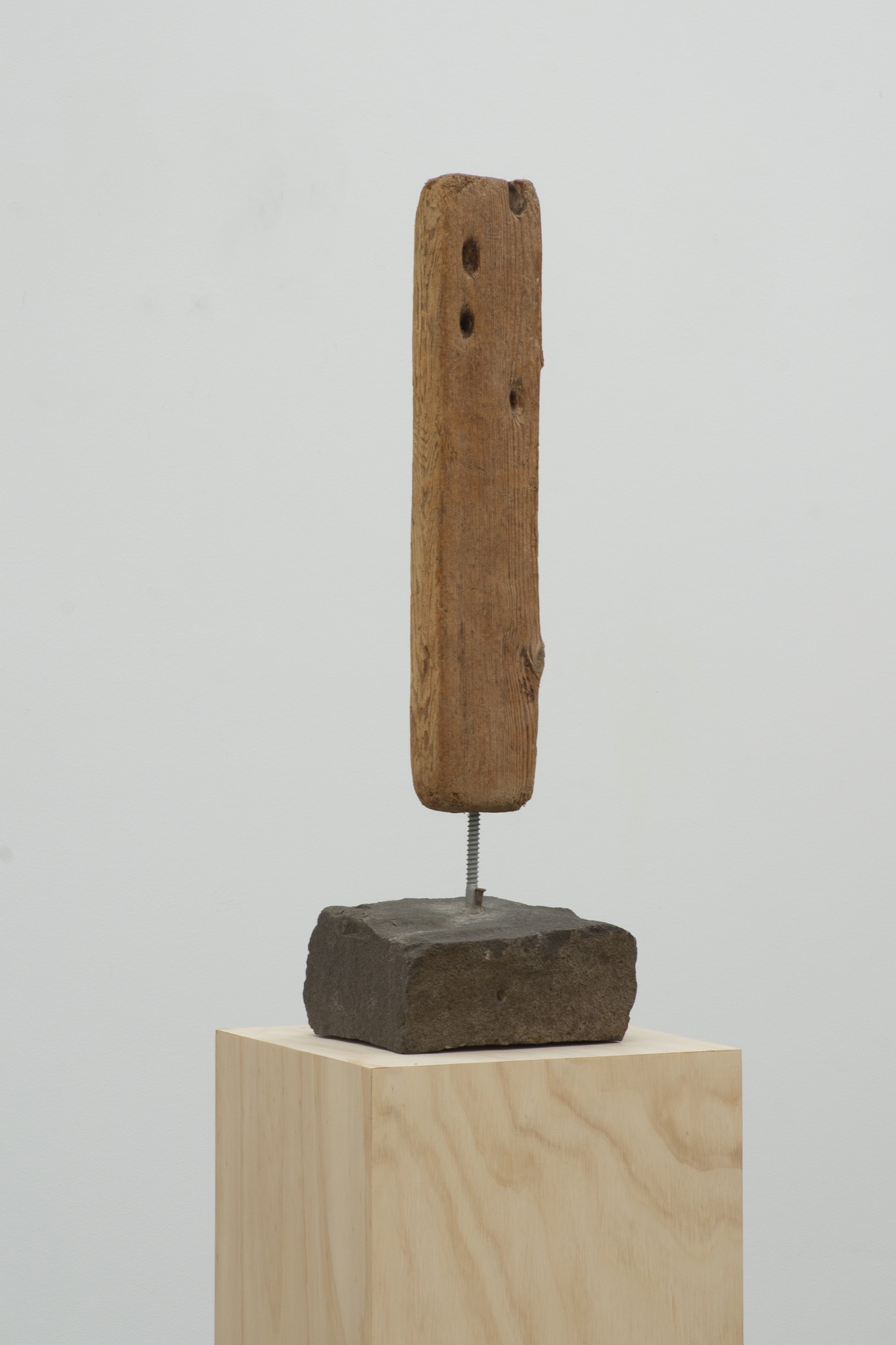
In another one of Newman’s texts she pulls together a couple of jokes about G-d’s disappearance for a failed grant application, stating “God’s not dead; he’s upstairs smoking”. In Judaism we say that the Torah is not in heaven. G-d has gone upstairs, but Torah is on the ground: as law, text and language. Rabbi Simon of the Jerusalem Talmud states that in the creation of Man, the angels of Kindness, Truth, Righteousness and Peace argued with the Holy One for and against the creation of human beings. What did G-d do? While they argued, the Holy One created humanity with one hand and with the other flung Truth to the ground. Truth shattered and spread like shards across the Earth. Once Man came into being and Truth was cast aside, all creation was good, or necessary.
Burn’s anecdotal art historicising contends that truth matters less than the “necessity” created by a story. If we were to pose Newman’s historical question, “is that a no?” to the One, what would be the most necessary answer?
Feeling less tied to my initial point of refusal,
Babs
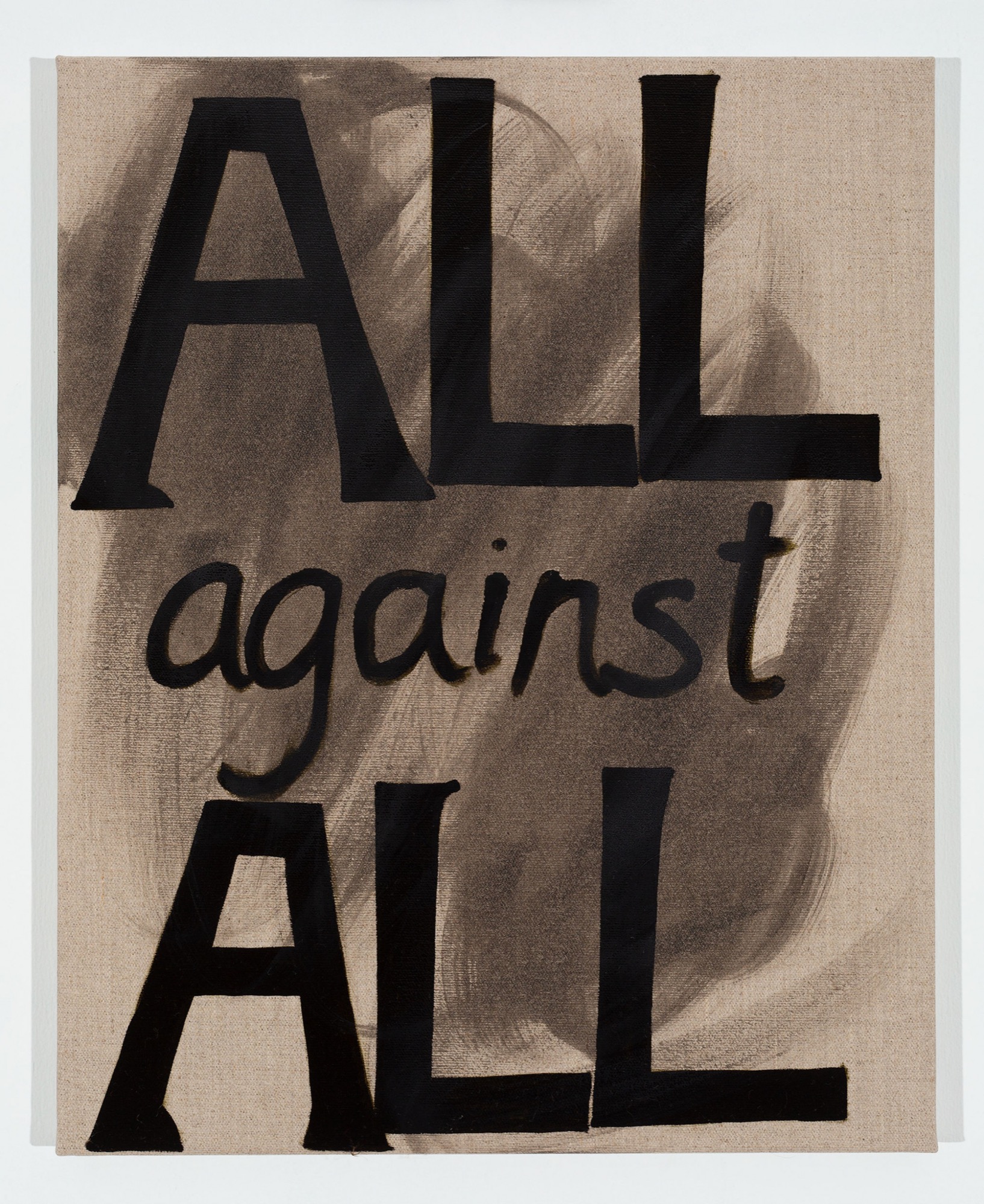
08/09/21
Dear Babs,
On the first page of Ben Lerner’s book Leaving the Atocha Station (2011), the poet narrator visits the Museo del Prado in Madrid. Standing in front of Roger van der Weyden’s Descent from the Cross (1435), he notices a man weeping. “Was he”, Lerner wonders,
Just facing the wall to hide his face as he dealt with whatever grief he’d brought into the museum? Or was he having a profound experience of art? I had long worried that I was incapable of having a profound experience of art and I had trouble believing that anyone had, at least anyone I knew.
This story reminds me of your initial shrug when approaching Newman’s works as well as my own at times constipated straining to access the Art. Are we getting somewhere transcendent with this Neon Parc exhibition?
I like the way you’ve described One, the scale of the chicken neck-like object relative to a human body and the insistent vertical plonk of it. It resonates with my physical experience of the exhibition, which I visited just before lockdown. You haven’t written an account of a profound experience of art, exactly, but it’s a reflection on materiality, form and viewing an artwork through a personal constellation of cultural references. It reads like an exercise in focus.
This speaks to something central (maybe “necessary”?) to Newman’s work: tracing different kinds of attention. In conversation, Newman told us that she’d kept the length of found wood, which comprises the primary part of the sculpture, around her house for years. Recently, she decided to attach it to the stone and the winding metal screw. This is one kind of attention, to things, to otherwise banal objects imbued with aura. To return to your prior question, is One a “no”? Maybe. A “no” to what? Maybe it’s a no to consumerism, to bland mass-produced objects; a yes to not knowing why you picked up a particular lump of wood at some point but trusting that it has intrinsic worth. Trusting intuition.

If One represents an attention to pure materiality in the Neon Parc show, the text paintings seem more like a record or byproduct of attention given to more cerebral encounters. The “LAS PINTURAS NEGRAS” one (Untitled, 2020), one of the best, most immediately summons Francisco Goya’s famous paintings. Now held in the Prado, the so-called Black Paintings were initially painted on the plaster walls of a house that the Spanish artist lived in between 1819 and 1824. They are histrionically abysmal. Black and teeth-yellow swathes of claggy paint make up scenes of witches, old men and the iconic Saturn devouring his son. In Newman’s text painting of the same title, the letters that make up the Spanish phrase are alternately crammed and stretched around the composition. Their status as both signifiers and painterly forms are blurred through the incongruity between the spelling of the words and their location on the canvas. A small scale “A” is left orphaned by the final jaunty “S” of “PINTURAS,” which squeezes into the bottom third to join the ranks of “NEGRAS”. The colour palette—-candlelit grime—-clearly invokes the nineteenth century. Taupe washes highlight the grain of the linen. Part of the affront of Goya’s Black Paintings is their obscene contrast to his glittering court portraits —- compare the motley crew in Witches Sabbath, or the Great He-Goat (1820—1823) with The Family of Carlos IV (1800). A similar effect is produced in Newman’s Neon Parc show. The scumbled primary colour abstracts seem to operate in a completely different sphere to this ominous placard. Babs, honey, I’m so sorry to make you sit through this stuff. I’m trying to do some praxis here. Newman’s different painterly references invoke the multiple histories and possibilities of the rectangular form. The canvas creates links between disparate subjects. It gives you an avenue through which to tap out of the myopic narcissism of the present. Looking at Newman’s decidedly twentieth-century Imi Knoebel and John Nixon homages summons one strand of art history. Considering this particular painting allows me to imagine discursive networks between Goya and the artist; between us, the spectators, and the stricken Spanish peasants of yesteryear.
The spindliness of the lettering in the “LAS PINTURAS” painting, thicker and straighter than Newman’s early text works, becomes slyly funnier the more I look at it. It’s emphatic yet scrabbling in its arrangement. The critic James Wood’s review of Leaving the Atocha Station ends with the observation that “it is one of the paradoxes of this cunning book that what might seem a skeptically postmodern comedy is also an earnestly old-fashioned seeker of the real—-that other thing”. Newman is an ironist, a product of post-modernism, but she’s also a devotee of Art. Get you a girl who can do both, right? Sub the book out for the painting and it works as my review.
Adìos for now,
Cam
10/09/21
You know that I’ve only seen the Neon Parc show backlit online. But I remember when we saw Newman’s work One All Alone together at Disneyland Paris a few weeks ago. It was a chaotic evening. We rushed in peak hour to see the show after work before clambering around Liam Osborne’s wooden monoliths, trafficking a Tupperware of soup from Thornbury to Brunswick via an indoor soccer match, and then collapsing on your couch to the serene sounds of John Cena’s WWE introduction on your new Smart TV (aka important research). The Newman work, tucked away in a suburban water closet, was a physical space of reprieve from this busy sched-just a few moments to stop, breathe and think about the colour red. In single file, we entered. You went first. I followed, peeping behind the door of le WC at the reified column. It was a ‘“STOP having children” pedestrian crossing red, finger sliced on a mandoline prepping dinner red, Rothko sunburn red. For good measure, I went back a second time. Emerging to rejoin the group with nods and smiles, we left all together to have a drink. Let the record state, it was one limoncello on me, and one on the house from the bar on High Street. That was good and probably my most honest review of Newman’s new work. It’s as good as silence really. There’s no need to get all John Cage about it. Us sweet young things had the privilege of just taking a look and sipping on some ‘cello with friends. Peace.
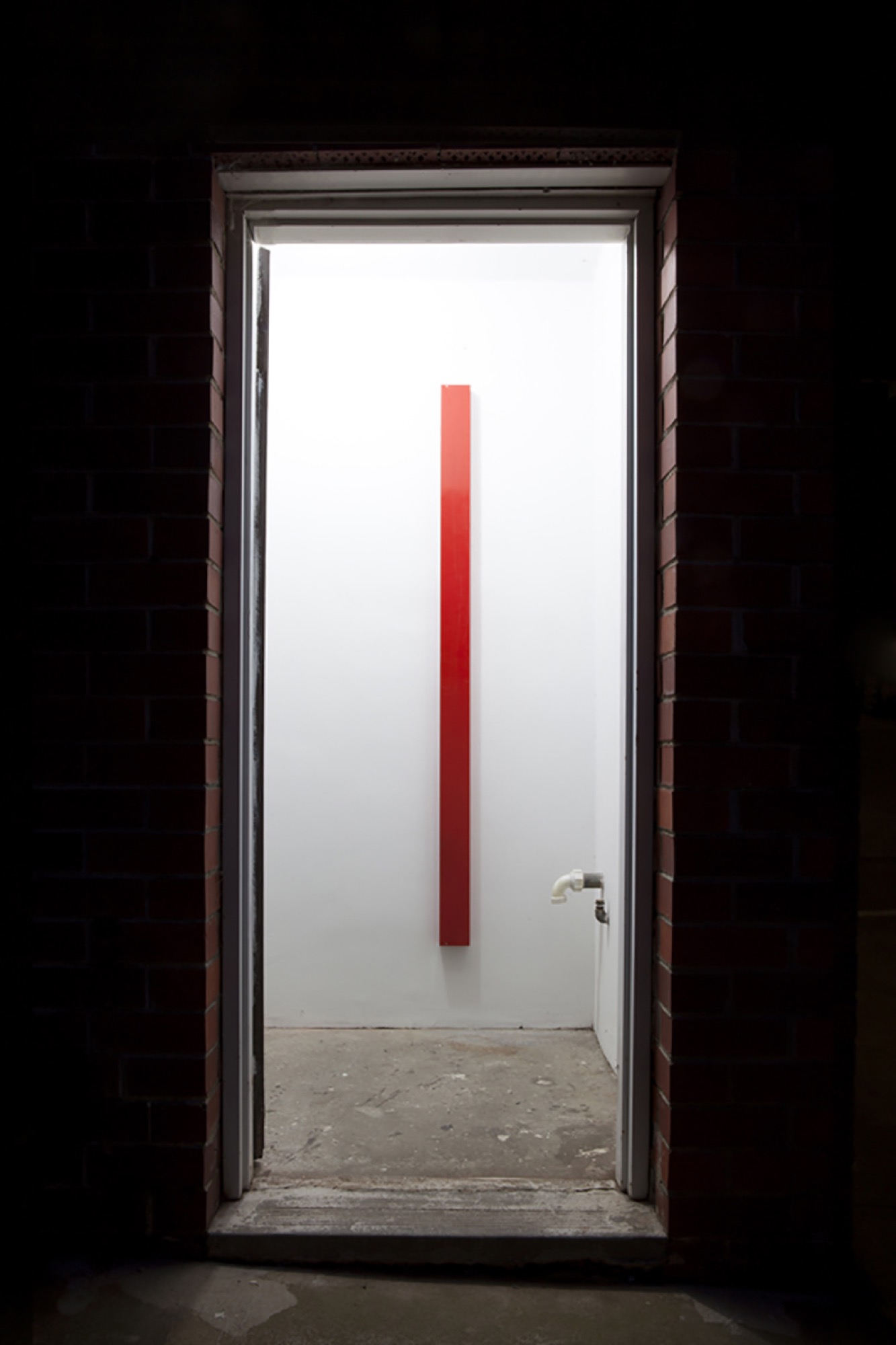
Cameron Hurst and Babs Rapeport first locked eyes at Notre Dame in 2014, scaling a teetering ladder to access St Jerome’s Laneway Festival. The ladder existed for a moment in time. The pair were changed forever. Four years passed before they met again. Today, you know them as the PC shock-jock hosts of the ARI radio hour the Clam and Jackie Bam Show.
